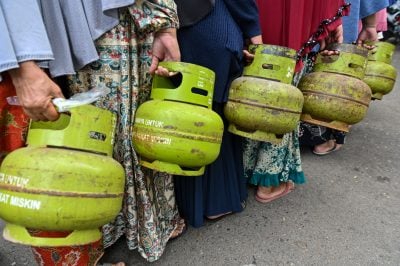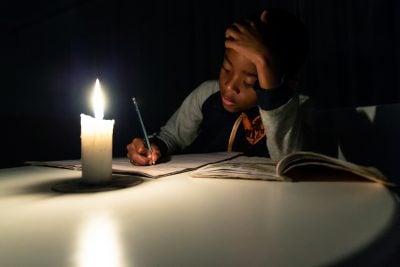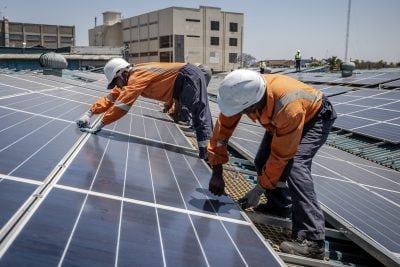Commercial banks and institutions are reluctant to fund untried technology. So how do you get new technology started? You grab the bull by the horns as South Africa is doing with an exciting new way of generating electricity, says Tom Nevin.
While commercial bankers shy away from first-of-a-kind ventures, South Africa is taking a leap of faith in concentrated solar power (CSP), a cutting-edge energy-generating technology that works around extreme temperatures.
In turnaround time moving at the speed of lightning when compared with traditional government-led development, work has already started on two CSP projects in the country’s blisteringly hot and radiantly sunny Kalahari scrublands in Northern Cape Province.
One is a tower installation generating 100MW which will transform the skyline of the diamond mining town of Upington on the Orange River, while the other project, some 100km downstream, is parabolic trough technology producing 50MW.What makes these two projects worth special mention is that the government is so convinced about the merits of CSP that it is unfazed at commercial banks’ reluctance to be involved and is taking the financial risk itself by putting up the funding for a 49% stake in the $1.3bn build. Its partner and majority shareholder is Abengoa, the Spanish energy company that pioneered the technology.
“CSP might still be in its infancy, but it has definite promise to migrate to eventual baseload,” Mohsin Seedat, associate director of KPMG’s Global Infrastructure and Projects Group in Johannesburg tells African Business, in effect predicting that CSP could become as major an energy producer in the future as coal is today.
Although it’s still early days and the projects are in their infancy, South Africa has high hopes of becoming a leader in CSP technology. And while ultimately the fuel source is free and abundant, it’s the blazing of the trail that takes money, conviction and faith in large measure to be first, but the rewards are considerable. While CSP still has to prove its cost efficiency ratios, it does, however, has a trump card up its sleeve. CSP holds out the hope of providing a reasonable storage solution and this gives it the credentials as a worthwhile research and development project.
The warehousing of electrical power on a commercial scale has always been a far-off dream. This is why the South African government has decided to take the global lead in CSP technology development. It wants to lead in storage technology.
Gas could be the key
A boost for CSP’s South African fortunes could be the tapping into vast shale gas resources in the Karoo, a sprawling arid region a few hundred kilometres northeast of Cape Town. Although there’s been no official announcement, the South African government’s recent backing for shale gas exploration in the region could be linked to its undisguised support for CSP as a favoured energy generation medium. The gas field is 400km-500km from the CSP tower and parabolic trough projects under construction and would be generally handy for backup and reserve generating resources.
Renewable energy projects in Africa, especially first-of-a-kind, are notoriously difficult to get off the ground. Achim Steiner, executive director of the UN Environment Programme, agrees. “Funding for renewable energy in parts of Africa is not working,” he says. “Public-private partnerships are not working because of too much risk on the private investors.”
The South African-Spanish package to launch CSP on the continent is therefore all the more remarkable and a statement of moment for South Africa’s belief in and commitment to the generation medium.
The big prize
It’s no secret that Eskom and the government want more out of CSP than simply commercial wattage and that the big prize is industrial-scale energy storage and heat transfer. So far, the quickest way to this golden fleece is the high temperatures only CSP (after nuclear) can provide. Protagonists who see CSP as the best bet point out that much of the pioneering technical work has moved off the R&D drawing board and is proving its worth in Spain and the US. What’s more, Spain’s Abengoa energy conglomerate, South Africa’s CSP partner, is a global leader in the technology. As the $1.3bn development is rolled out in the remote semi-desert, hard-pressed communities, towns, villages and hamlets will feel the effects of the sudden boom and wonder what the burst of economic activity will mean to them.
“Their lives will never be the same,” predicts a senior project manager. “The multiplier effect will propel change quickly and aggressively because the development of power projects like these happen at speed once the initial formalities are out of the way.”
CSP installation especially lends itself to all but the most high-tech components supplied domestically. “Depending on demand, there’s no reason we can’t localise a large percentage of component manufacture and become a regional supplier ourselves,” he says. This is especially true for the CSP projects under construction in the Northern Cape Province. Few regions in Africa – apart from the Sahara Desert – receive the intensity of solar radiation that bakes this South African region for at least 350 days a year, and have as much free land.
Africa attracted about $4.3bn of the $268.7bn invested worldwide in renewable energy last year. It signed up 36 projects, 28 of which were in South Africa, with Kenya, Nigeria, Ethiopia and Zimbabwe accounting for the rest. South Africa’s Industrial Development Corporation and CSP pioneer, Spain’s Abengoa, have gone against the trend, boldly it seems, where commercial financial institutions feared to tread, and are wasting no time with their 150MW CSP build.
Want to continue reading? Subscribe today.
You've read all your free articles for this month! Subscribe now to enjoy full access to our content.
Digital Monthly
£8.00 / month
Receive full unlimited access to our articles, opinions, podcasts and more.
Digital Yearly
£70.00 / year
Our best value offer - save £26 and gain access to all of our digital content for an entire year!
 Sign in with Google
Sign in with Google 


